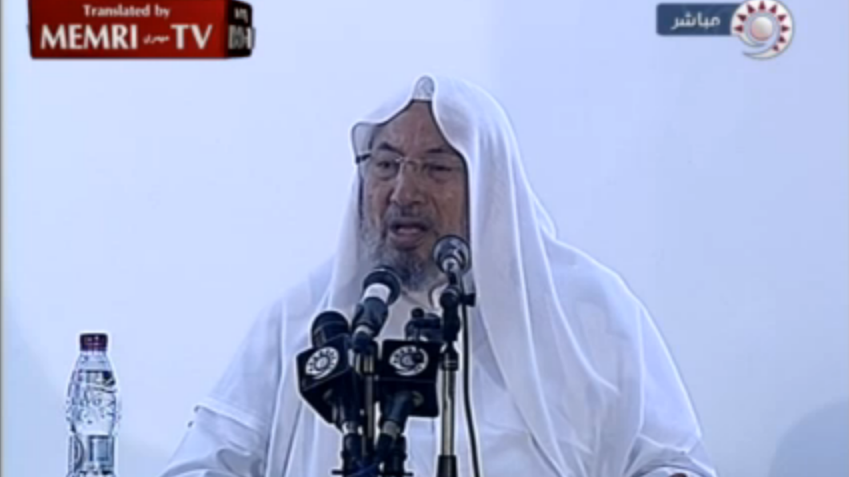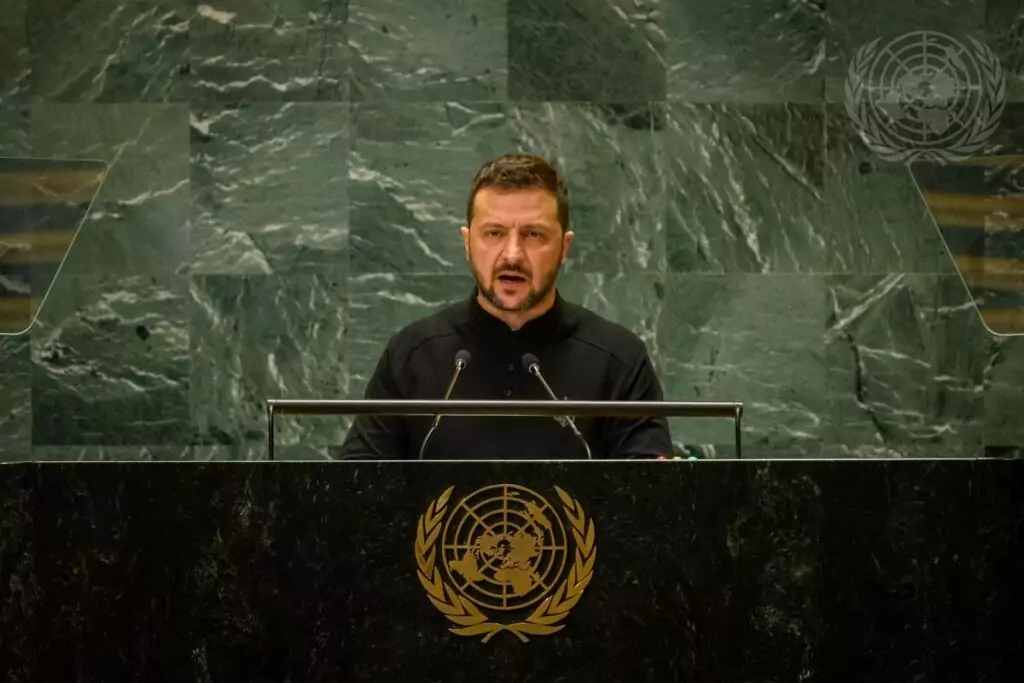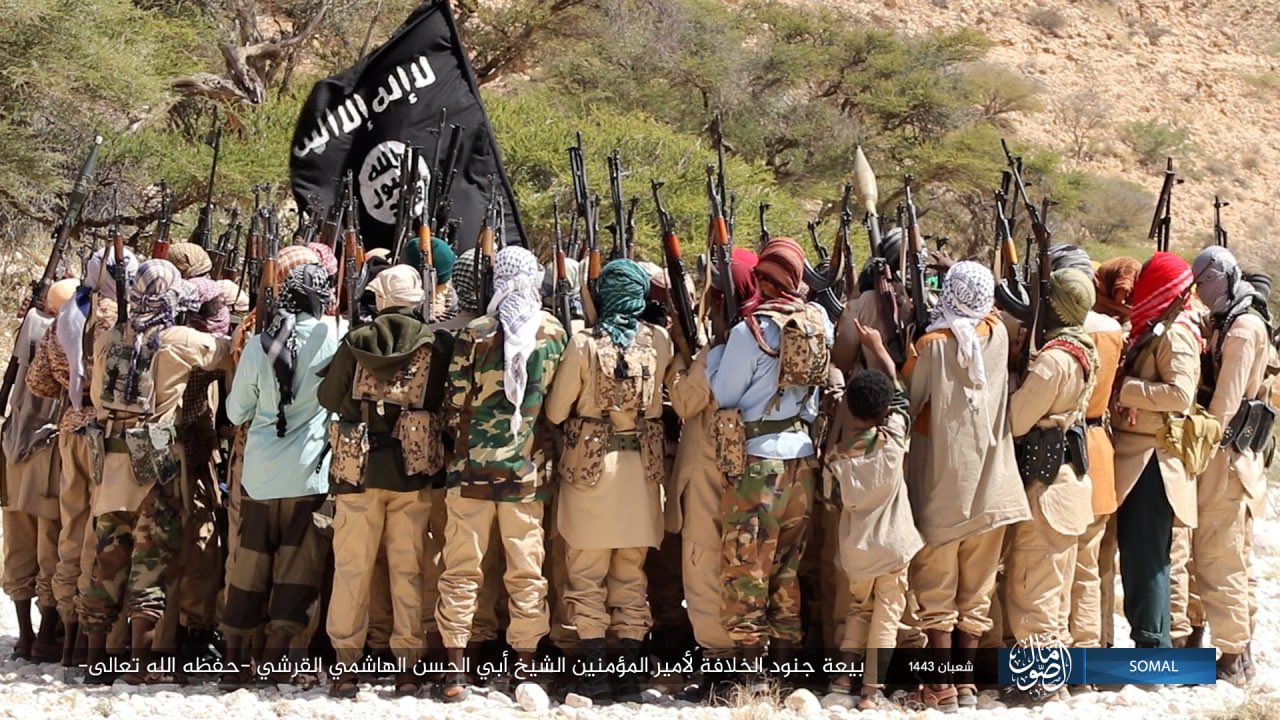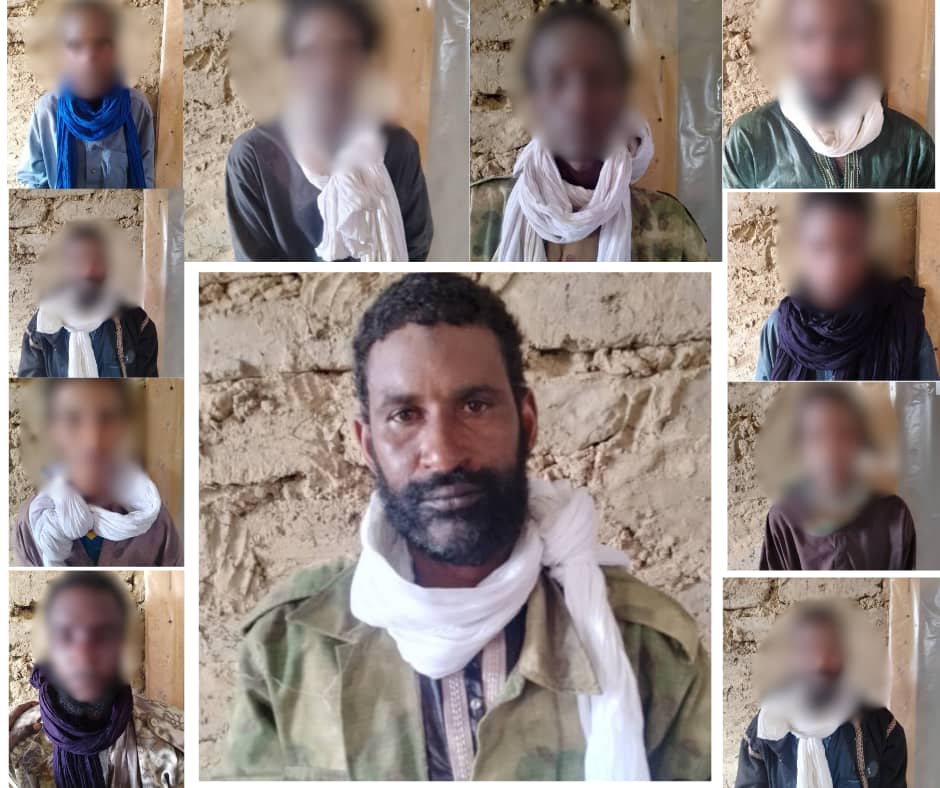
BRIEFS
BRIEFS
MUSLIM BROTHERS’ SPIRITUAL LEADER YUSUF AL-QARADAWI CONDEMNS HEZBOLLAH
Andrew McGregor
There are few more prominent preachers in the Islamic world than Shaykh Yusuf al-Qaradawi, an Egyptian Islamic scholar now based in Qatar, where he hosts a religious issues program on al-Jazeera with a viewership of 60 million and acts as the senior scholar for the popular website Islam Online. Often viewed as the spiritual leader of the Muslim Brotherhood, al-Qaradawi, like many Sunnis, was deeply impressed by the resistance the Lebanese Shiite Hezbollah movement offered to an Israeli invasion force in 2006. However, Hezbollah’s decision to aid the Syrian regime, its military ally, in repressing Syria’s largely Sunni armed opposition, has seen its support in the Sunni community largely evaporate. Most damaging has been the reversal in opinion of al-Qaradawi, who has abandoned his former support for the movement to publicly denounce Hezbollah as the servants of Satan.
For al-Qaradawi, the last straw was Hezbollah’s successful 17-day assault on the town of Qusayr, near the Syrian border with Lebanon. The recapture of Qusayr was a devastating blow to Syrian opposition forces that, while not necessarily decisive, may still represent a turning point in Syria’s internal struggle as it restores government control of the Damascus to Aleppo highway and access to the Alawite heartland on the Syrian coast. Hezbollah deputy leader Shaykh Na’im Qassim described the battle as “a severe blow to the American-Israeli-Takfiri scheme,” reflecting Hezbollah’s belief that anti-Shi’a Sunni extremists are being funded and armed by Israel and the United States as part of an effort to topple the Syrian regime and thus weaken resistance to a renewed Israeli assault on Lebanon and the destruction of the Palestinian cause (Naharnet [Beirut], June 6).
In a May 31 sermon at the Umar bin al-Khattab mosque in Doha, al-Qaradawi called on all Muslims with military training to make themselves available to the Syrian opposition. Describing Hezbollah (“the Party of God”) as Hizb al-Shaytan (“the Party of Satan”), al-Qaradawi suggested that the Lebanese Shiite movement was acting as a proxy for Iran, which desired “continued massacres to kill Sunnis.” The Egyptian preacher went on to ask the Sunni community: “Iran is pushing forward arms and men [in support of the Assad regime], so why do we stand idle?” Al-Qaradawi went on to acknowledge he had made a critical mistake in defending Hezbollah against attacks against it by the religious leadership of Saudi Arabia after 2006 in the belief that Shiites and Sunnis must present a unified resistance to Israel: “It seems that the clerics of Saudi Arabia were more mature than me” (Naharnet [Beirut], June 2; al-Arabiya/AFP, June 2).
Saudi Grand Mufti Shaykh Abd al-Aziz al-Ashaykh thanked al-Qaradawi for his public reversal of opinion and adoption of the approach taken to Hezbollah (“this detestable sectarian movement”) by the Saudi religious leadership, noting that Hezbollah did not respect “ties of kinship or the covenant with the believers [i.e. Sunni Muslims]” (Arab News [Jedda], June 7).
The contradictions inherent in al-Qaradawi’s simultaneous support of Hezbollah and the Syrian opposition had gradually become apparent as the Syrian crisis worsened. On May 4, the Egyptian preacher denounced Hezbollah and Shiite Iraqi Prime Minister Nuri al-Maliki for their support of al-Assad and called on the Syrian army to defect to the opposition Free Syrian Army (al-Sharq Online [Doha], May 4). Though he did not mention Hezbollah by name, al-Qaradawi had warned supporters of the Syrian regime of the consequences of their actions later in May during a controversial visit to Gaza: “Those who are arrogant on this earth, Bashar al-Assad, his followers and all those who support him with funds, weapons and men, from all countries, will be taken by God” (al-Aqsa TV [Gaza], May 10).
However, al-Qaradawi’s about face on the relationship with Hezbollah appears to have put him at odds with the leadership of the Izz-al-Din al-Qassam Brigades, the military wing of the Sunni HAMAS movement that rules Gaza. According to reports carried in an Islamist-sympathetic daily, the HAMAS military command sent a message to the movement’s Political Bureau rejecting al-Qaradawi’s approach, saying that the movement had benefited from the arms and military support it had received as a consequence of its alliance with Hezbollah and Iran, while “Arab money” from Saudi Arabia and Qatar had done nothing to advance the liberation of Palestine in comparison (al-Quds al-Arabi, June 6).
In April, the Syrian Ba’athist Party’s website denounced “the devil of sedition in Egypt, the named Yusuf al-Qaradawi” for issuing a fatwa calling for jihad in Syria and allegedly inciting assassins to kill Dr. Muhammad Sa’id Ramadan al-Buti, a noted ethnic-Kurdish pro-regime religious scholar who opposed Salafist ideology and was a noted critic of al-Qaradawi. Al-Buti was killed in a March 21 suicide bombing that left at least 41 other people dead inside a Damascus mosque (al-Ba’ath Online [Damascus], April 10).
In his May 31 Friday sermon in Doha, al-Qaradawi, using a pejorative term for the Syrian Alawites, described the “Nusayris” as non-Muslims, referring to the 1318 fatwa issued by the controversial Islamic scholar Ibn Taymiyah (1263-1328), who said:
These people named “al-Nusayriya”… are greater disbelievers than the Jews and Christians. Nay, they are greater disbelievers than most of the polytheists, and their harm to the Umma (community) of Muhammad is greater than the harm of the disbelievers who are at war with Muslims, such as the Tartars, disbelieving Europeans and others” (Fatwa 35/145). [1]
In making this statement, al-Qaradawi chose to overlook the 1936 fatwa issued by Hajj Amin al-Husayni, the Mufti of Jerusalem, which ruled that Alawis were indeed Muslims, though there are indications this ruling was politically motivated rather than the result of research into the beliefs of the Alawis, a minority sect that has dominated the Syrian government and military since independence.
Last October, al-Qaradawi included Hezbollah in a list of “enemies” who threatened Syria and the “Arab nation” as a whole: "Iran is also our enemy, the enemy of the Arabs. Those killed in Syria have been killed by the Iranians, the Chinese, the Russians, and the Syrian army. The Iranians stand against the Arabs in order to establish a Persian Empire… The same applies to Hezbollah, which sends its men to fight in Syria, and come back in boxes" (al-Quds al-Arabi, October 18). Al-Qaradawi repeated his description of Russians as “enemies to Muslims” in his May 31 Friday sermon delivered in Doha (al-Arab [Doha], June 1).
These remarks brought condemnation from Iranian and Shiite sources, in which al-Qaradawi is routinely described as “the NATO Mufti.” Further criticism came from leading pro-Kremlin members of Russia’s Muslim community, including Mufti Mukhammedgali Khuzin, who said: “It is no secret that this man is a puppet in the hands of reactionary political circles displeased with Russia’s foreign policy” (Interfax, November 30, 2012). Chechen president Ramzan Kadyrov suggested that “Qadarawi, as a scholar, would be well-advised to take up educational activities and not dabble in politics, leaving it to professionals” (Interfax, November 12, 2012).
Notes
1. Yvette Talhamy, "The Fatwas and the Nusayri/Alawis of Syria," Middle Eastern Studies 46(2), 2010, pp. 175–194.
SOUTH AFRICA MAY DEPLOY SANDF “PEACEKEEPERS” IN URANIUM FIELDS
Andrew McGregor
As rising insecurity in South Africa’s lucrative platinum mining sector begins to have a significant impact on the national economy, South African Labor Minister Mildred Oliphant has proposed deploying “peacekeepers” (likely drawn from the South African National Defense Force [SANDF]) to restore order. South Africa’s mining industry, which represents 20 percent of the national economy and 60 percent of its exports, has been riven by assassinations and bloody battles between rival unions and security forces, all fueled by the deep involvement of South Africa’s ruling African National Congress (ANC) in the mining sector’s labor strife. The proposal to deploy South Africa’s unionized military as an intervention force comes at a time when the SANDF is struggling to meet internal obligations and multiple foreign deployments on a shrinking budget (see Terrorism Monitor Brief, January 25). The violence at the platinum mines is partly responsible for a decline in South Africa’s economic growth, which hit a new low of 0.9 percent in the first quarter of the year (AFP, June 4). Some 80 percent of the world’s platinum reserves are found in South Africa.
At the heart of much of the strife in the platinum mines is a struggle for control of unionized workers between the ANC-associated National Union of Miners (NUM) and the upstart Association of Mineworkers and Construction Union (AMCU), which has made impressive inroads on the membership of the NUM, a traditional source of funding and support for the ANC. The mining sector is the largest private employer in South Africa and many of the mining unions have, until this point, been tightly tied to the ANC. AMCU members increasingly see South Africa’s police as allies of the NUM, creating an atmosphere in which labor tension could easily degenerate into political violence.
According to Mamphela Ramphele, a former managing director of the World Bank and a former chair of Gold Fields Limited (a major South African gold mining company), the crisis in the platinum fields is exacerbated by the ANC’s alliance with the NUM, a relationship that is manifest in an NUM office doubling as the local headquarters of the ANC: “How do you become an honest broker when one of the parties is your ally? It’s very difficult to be unbiased… That for me is a violation of good governance…” (AFP, June 6). Ramphele has recently formed a new political party to challenge the ANC called Agang (“Build”).
Mineral Resources Minister Susan Shabangu clearly identified ANC and NUM interests as identical in a May 24 speech in which she likened the pressure on the NUM to the conservative forces that destroyed the British mining unions in the Margaret Thatcher era:
You are under siege by forces determined to use every trick in the book to remove you from the face of the earth. [They want to make sure] that no progressive trade union will be permitted in the mining sector. It is only those who are willfully blind who cannot see that the agenda is to defeat and drive the African National Congress from power and reverse the gains of the national democratic revolution (Business Day [Johannesburg], May 24).
The NUM has already lost its majority status at works belonging to Anglo American Platinum and Impala Platinum and is now in a bitter and increasingly violent fight to retain its status at the Lonmin mines, where 70 percent of the workers now belong to the AMCU. With the AMCU now demanding recognition as the majority union at the Lonmin mines in Marikana and the expulsion of the NUM from local union offices, a South African labor court has given the NUM until July 16 to prove it is still the majority union or be expelled from their offices at the Lonmin works (majority status is defined as 51 percent) (AFP, June 4). AMCU leaders have complained for months that the NUM has been fraudulently listing AMCU members on NUM rosters to restore their membership and claim membership dues, a position seemingly validated by Lonmin’s June 4 announcement that it had suspended eight employees, some of them NUM shop stewards, for alleged union membership fraud (SAPA, June 5).
The AMCU’s aggressive recruitment campaign has been led by Joseph Mathunjwa, an emotional leader who frequently resorts to dramatic gestures and biblical allusions to promote his union in the face of what he regards as an alliance between the NUM and the ANC (Business Day [Johannesburg], June 7). South African platinum miners are looking for major increases in their wages and have turned to the AMCU to deliver on these demands rather than the more conservative NUM, which is perceived to be more cooperative with management. In the meantime, the turmoil in the mines has led to frequent and debilitating work stoppages.
A high-profile inquiry is ongoing in Pretoria to discover the facts behind the massacre of 23 striking mineworkers by security forces at the Lonmin platinum mine in Marikana on August 16, 2012. The deaths followed a week of violence that saw an additional ten people killed, including two policemen and two security guards (SAPA [Johannesburg], June 7). Testimony was heard recently from Major General William Mpembe, who was in charge of security operations at the time and has been blamed by many in the security sector for the deaths of the two policemen (SAPA [Johannesburg], June 7). Police have since been withdrawn from the Marikana region for their own safety, leaving a security vacuum in the area.
After a NUM shop steward was murdered and a NUM treasurer wounded on June 3, a spokesman for the Congress of South African Trade Unions noted that 60 people had been killed over the last year as a consequence of disputes at the Lonmin and Impala platinum mines (SAPA [Johannesburg], June 4). The Congress of South African Trade Unions (COSATU), a powerful government-allied trade union federation representing nearly two million workers, warned that the “anarchy” in the platinum mining region had created a “prevailing sense of insecurity… No one is being arrested and not a single person has been convicted for any of these [most recent] murders” (AFP, June 4).
With only three to four months left before South Africa’s major platinum producers are required to finish negotiations on new contracts for their employees, it seems essential that the dispute between the rival labor unions must be resolved quickly to avoid further violence and the possible shutdown of a large part of South Africa’s platinum-mining industry. While the deployment of “peacekeepers” from the hard-pressed SANDF may be able to put a temporary damper on the violence at the mines, it will not be able to address the union rivalry that is at the core of the crisis, particularly if they are seen as favoring the government-allied NUM. Even if the AMCU succeeds in displacing the NUM, it will have to satisfy the considerable expectations of its membership if it is to avert a NUM comeback or challenges from new labor groups claiming to be able to satisfy workers’ demands.


